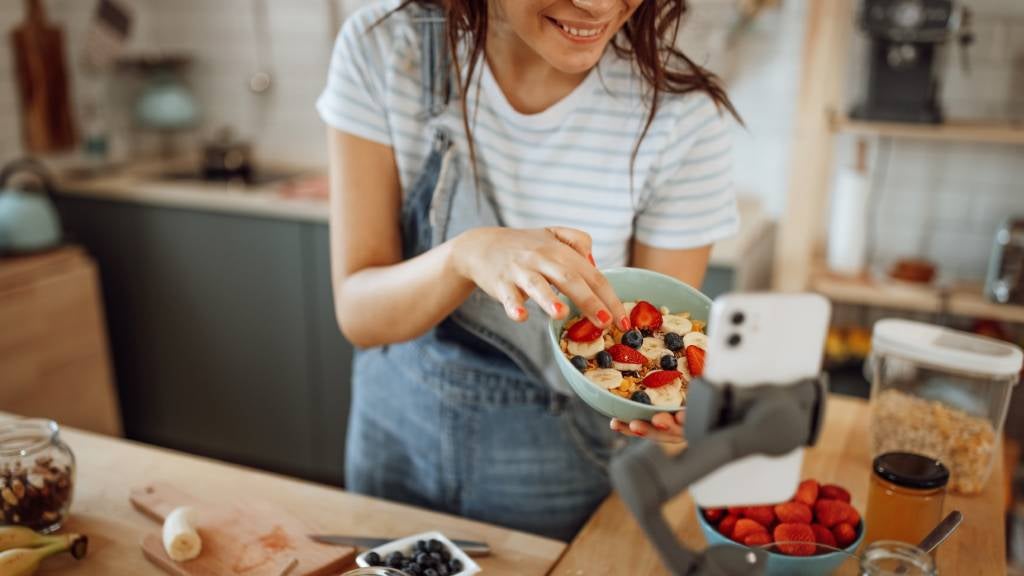Food for thought: Which health food trends are worth the hype?

The world of health food trends is constantly growing and changing, fuelled largely by social media platforms like Instagram and TikTok. While some trends are beneficial, others can be overhyped or even downright harmful.
With expert guidance from Dr Andrea Robertson – who is an osteopath, naturopath and nutritionist – we explore which health food trends are worth exploring and how to pull aside the ‘hype’ curtain when it comes to healthy eating.
Navigating the ever-changing world of health food trends
Health food trends can be both inspiring and overwhelming. Social media has made it easier than ever to be fed information and recipes, but it’s also created a platform for unverified advice. And that can be dangerous.
“Health food trends are constantly evolving, especially with the popularity of Instagram and TikTok,” Dr Andrea says. “The challenge on social media is to discern between educated experts and not-so-educated influencers.”
She advises following qualified professionals and curating a reliable feed to stay informed.
While trends can introduce culturally diverse foods and creative recipes, Dr Andrea says they should serve to inspire you rather than be rule-based: “Use trends as inspiration, not as one-size-fits-all promises.” Your individual dietary needs will vary depending on things like your age, activity level and any health conditions.
The rise of protein-heavy diets
Protein has become a dominant player in health-food trends, especially for people who are interested in weight management and muscle-mass maintenance. While these things can be beneficial, you’ll want to approach protein consumption with balance and awareness.
“There is certainly a growing awareness of protein’s role in weight management,” Dr Andrea says. “Even so, from my experience in working with women who want to lose weight through their 40s, very few of them understand how much protein they need to eat to meet their daily requirements.”
She teaches her clients about the Protein Leverage Hypothesis, which explains that humans tend to overeat calories until their protein requirements are met. What’s most important is that you realise your protein needs vary by age and lifestyle.
“For women younger than 35, the requirements are 1g per kg of ideal body weight, and for women over 35, it is 1.2g per kg of ideal body weight. For men, the requirements are higher again.”
Incorporating plant-based proteins such as edamame beans in salads and hemp protein in muffins or biscuits can help meet these needs.
Macros: Are they really the key to health?
Macronutrient counting, or “tracking macros” has surged in popularity among fitness enthusiasts. But Dr Andrea cautions against making this a long-term practice.
Macronutrients are nutrients that give your body the most amount of energy, which is measured as kilojoules (KJ) and kilocalories (KC). These nutrients are protein, carbohydrates and fats. As well as reading the nutrition panel on product packaging, people also use online calculators and food scales to measure their macros and control how much energy (KJ and KC) they intake in a day.
“Counting macros can create obsession or ‘diet culture’ around foods,” she says. “Other than for specific focuses, such as body building, I don’t believe there is a need to count macros as a sustainable or long-term health and nutrition approach.”
Instead, she advocates for balanced meals that include portions of protein, healthy fats and starchy carbohydrates, alongside plenty of vegetables and fruits.
“I advise my clients to choose a protein about the size of the palm of their hand, add some healthy fats about the size of their thumb and add some starchy carbs – about the size of what they could hold in a cupped palm. Plus adding an abundance of all other vegetables, with one to two servings of fruit per day.”
What is clean eating?
Clean eating promotes whole, minimally processed foods while not consuming additives and preservatives. While as a concept it can encourage healthier food choices, it’s also not without its pitfalls.
Dr Andrea warns against overly rigid interpretations of clean eating, which can lead to unnecessary dietary restrictions: “The best nutrition approach is one that is diverse, balanced and right for the individual. To promote eating so much of one ingredient, although healthy in moderation, can be detrimental when taken to the extreme.”
Learn more: 10 foods to help boost mental performance
Emerging food trends
Social media continues to spawn new health-food trends, some of which show promise while others raise concerns. Here are two notable trends:
The dense bean salad
Popularised by influencer Violet Witchel, this viral trend involves meal-prepping high-fibre salads using tinned beans, veggies and dressings. Dr Andrea praises the trend’s flexibility and focus on healthy habits but cautions that it might not suit everyone.
“Some people with gut issues such as SIBO or IBS may have some bloating and discomfort after eating a meal so high in fibre,” she says. “Listening to your body in terms of any symptom presentation is so important to know if this trend is suitable for you or not.”
The cucumber salad craze
TikTok creator Logan Moffitt’s cucumber salad recipes have garnered waves of attention for their simplicity and Asian-inspired flavours. However, Dr Andrea raises concerns about the excessive focus on one ingredient. Moderation and variety should always be the priority.
Decoding health food trends for your lifestyle
The key to navigating health food trends is to listen to your body and prioritise what works for you. “Learn to listen to your body and brain,” Dr Andrea says. Physical symptoms like bloating, inflammation or fatigue can signal that a trend might not be the right fit for you.
She also believes in setting boundaries around social media use if health trends are causing you anxiety or to avoid comparison culture.
“Unfollow accounts that make you feel not enough,” she advises. Your mental health is just as important as your physical wellbeing.
Learn more: 4 habits to consider stopping to super-charge your mornings
Holistic approach to a happier you
Beyond focusing on your day-to-day health and diet, you can look at other areas of your life to ensure you’re enriching all facets , whether that’s your social connections, career or learning and development. Another important aspect of your life to consider is your financial health. See whether life insurance is something that may be worth considering, as a way to protect your family’s financial future and bring peace of mind. Learn more about Guardian Life Insurance or request a quote online today.
3 Feb 2025
